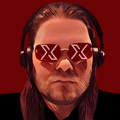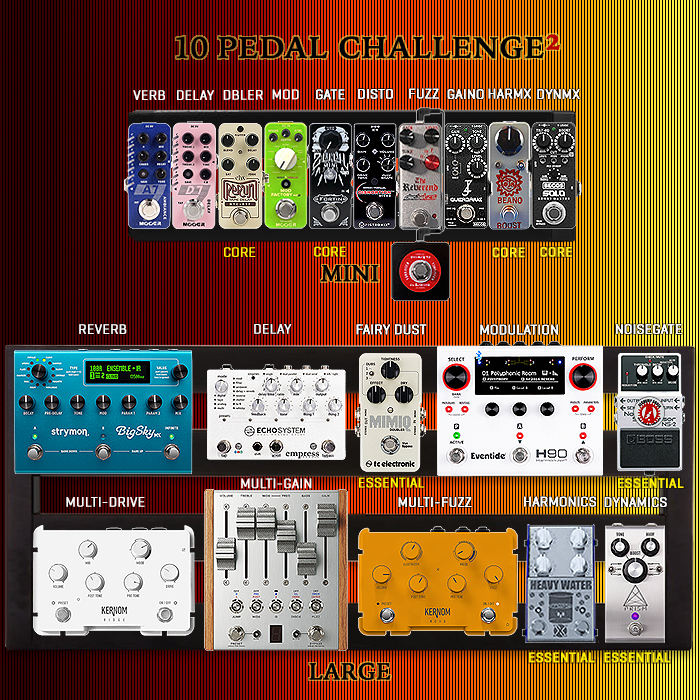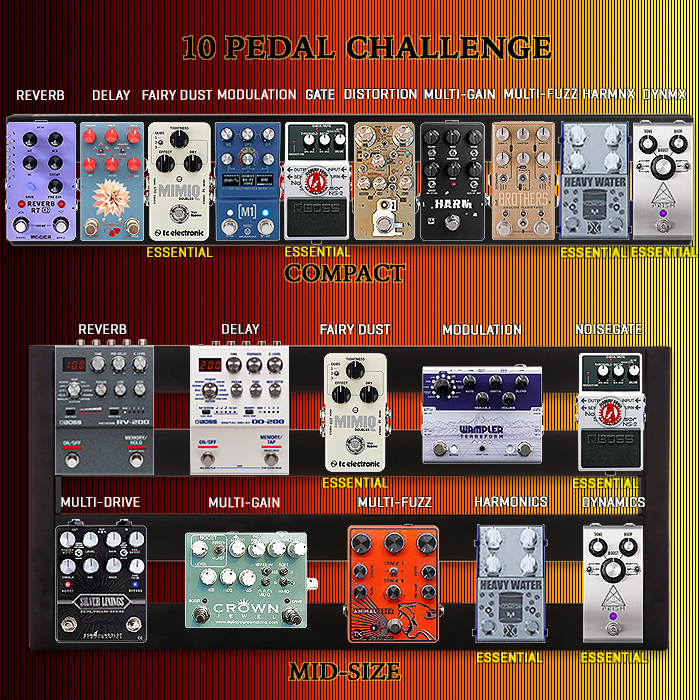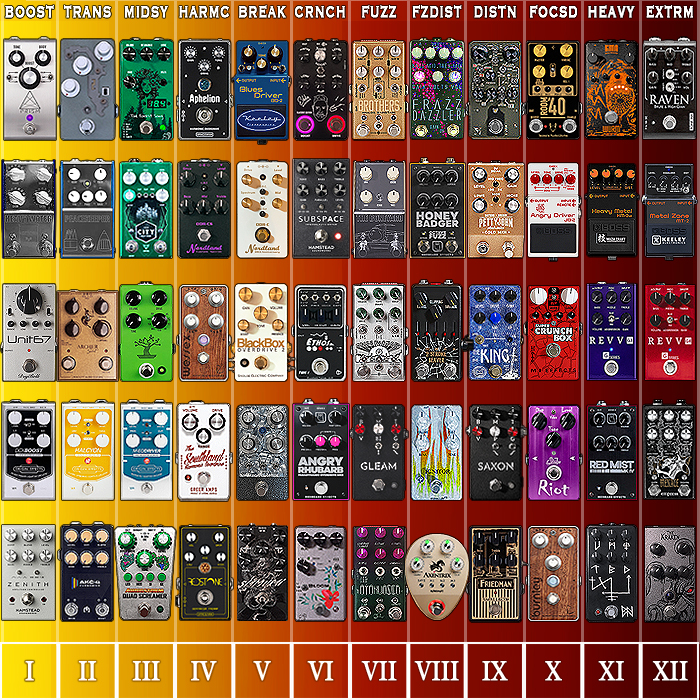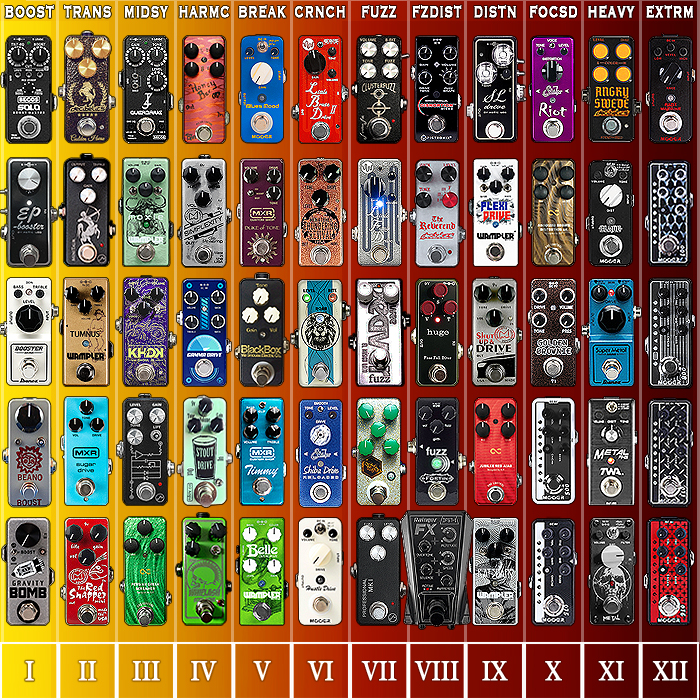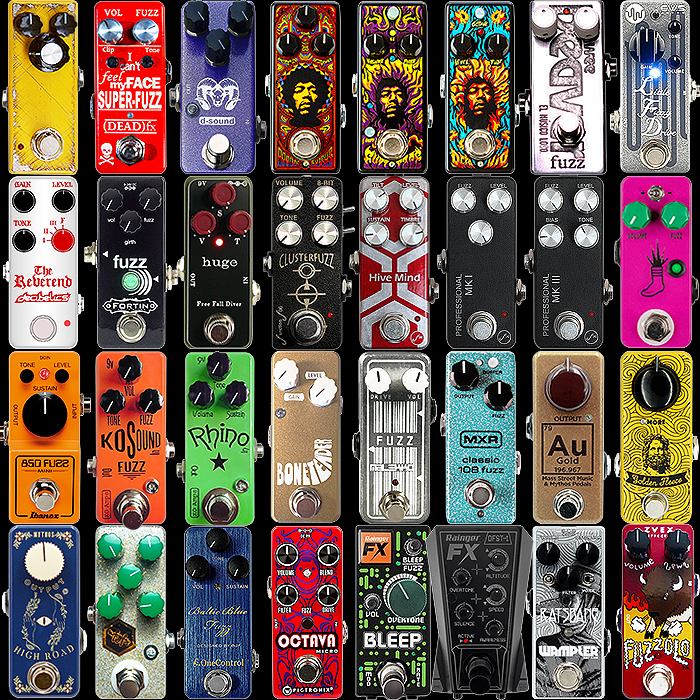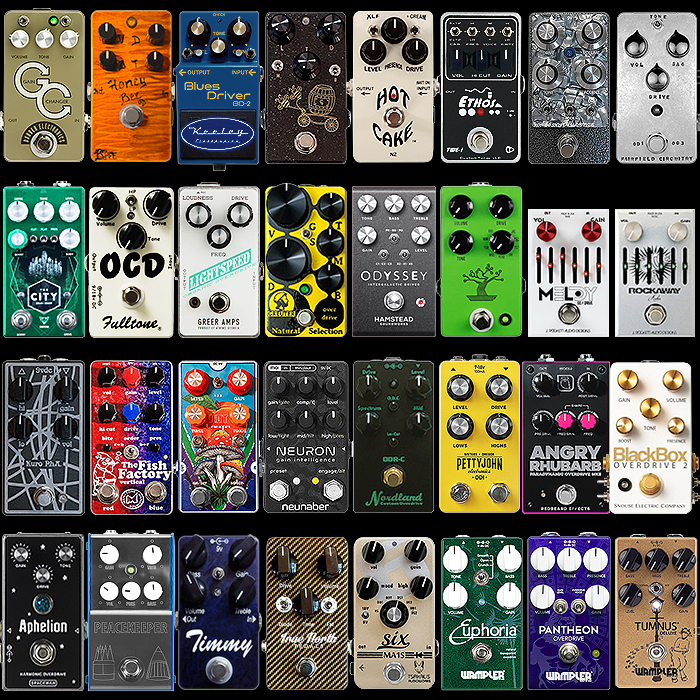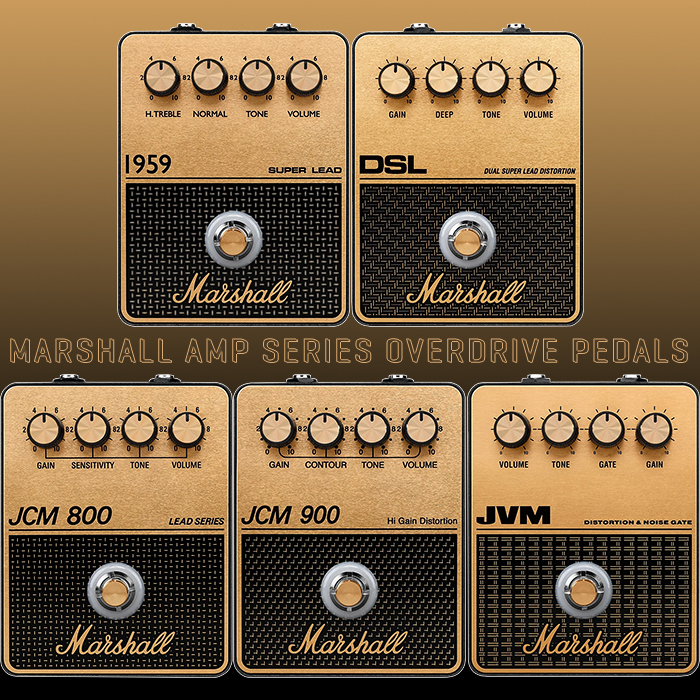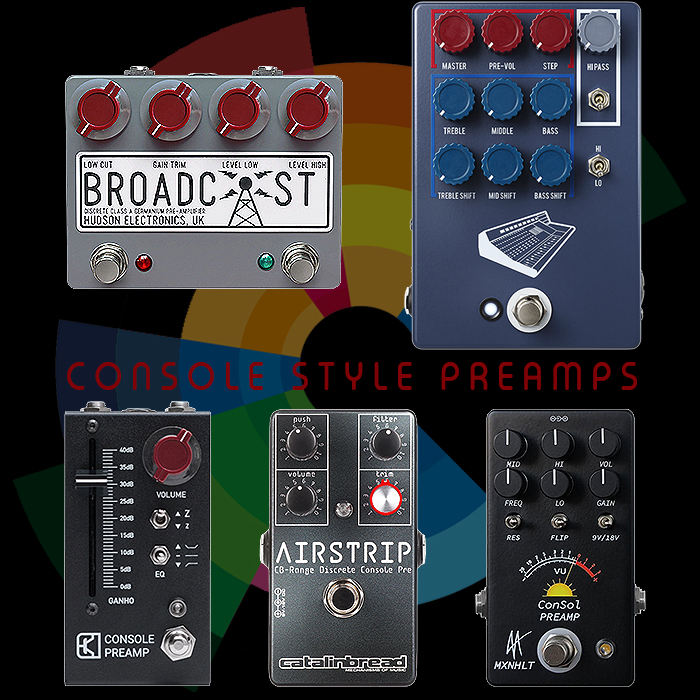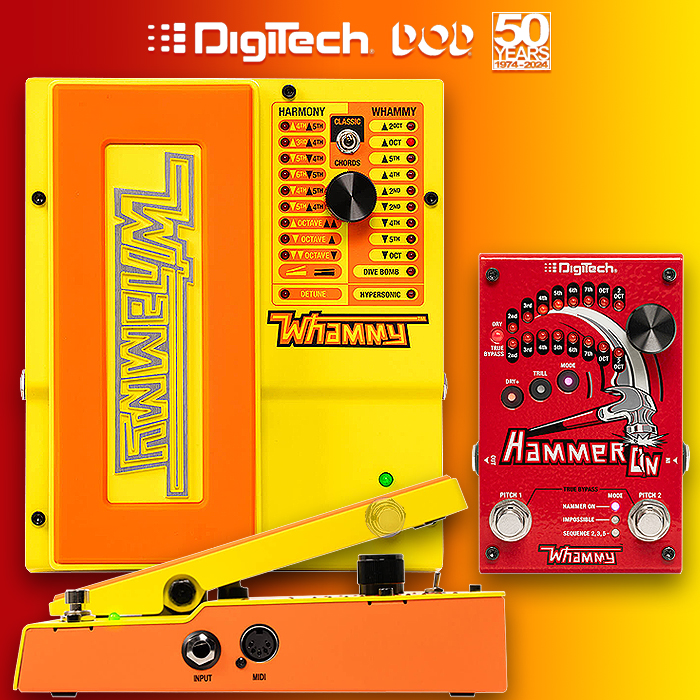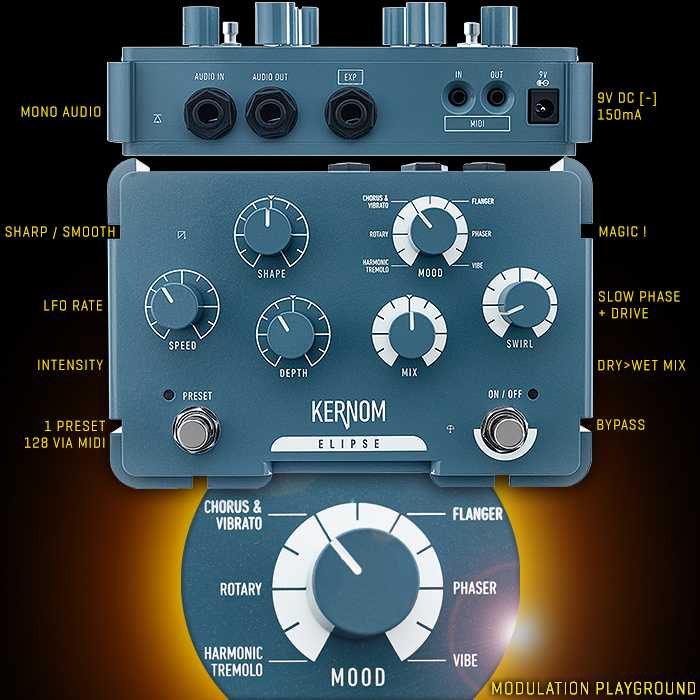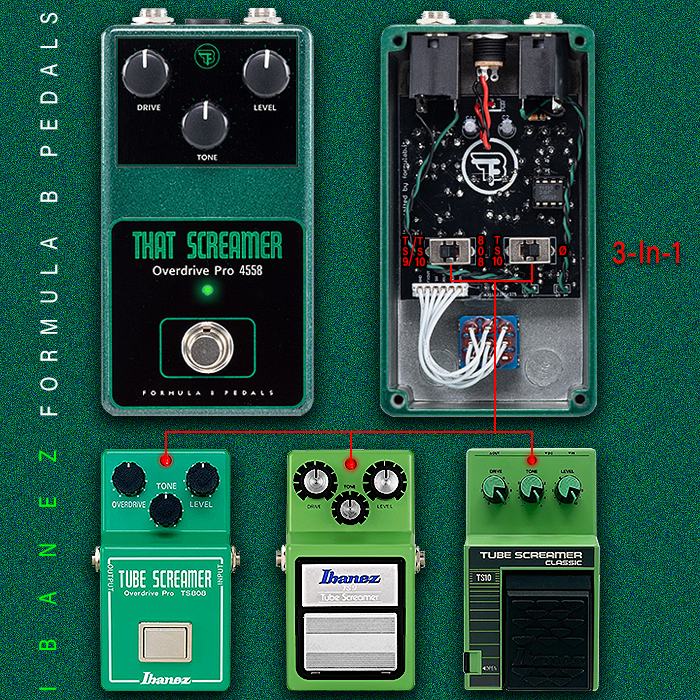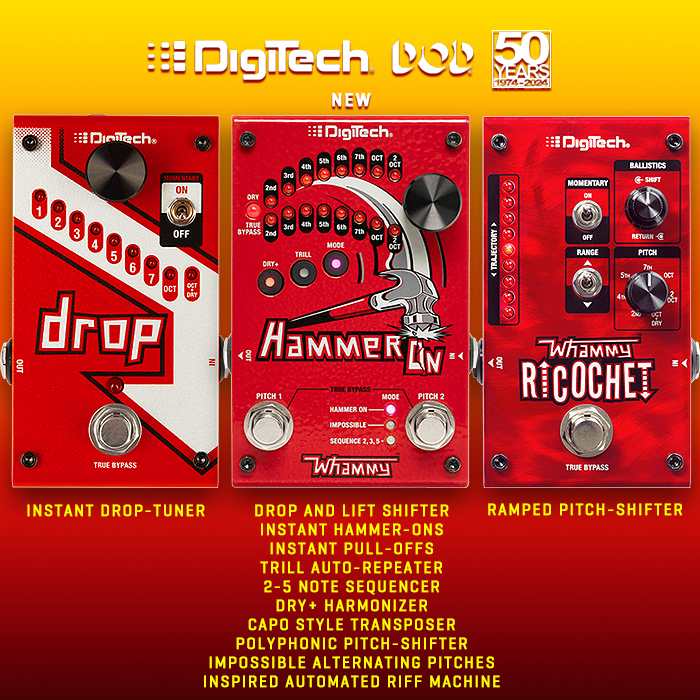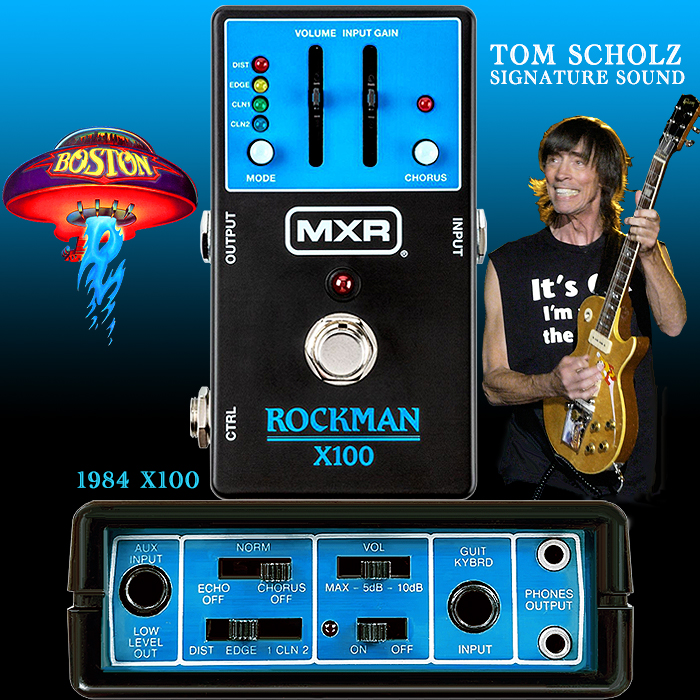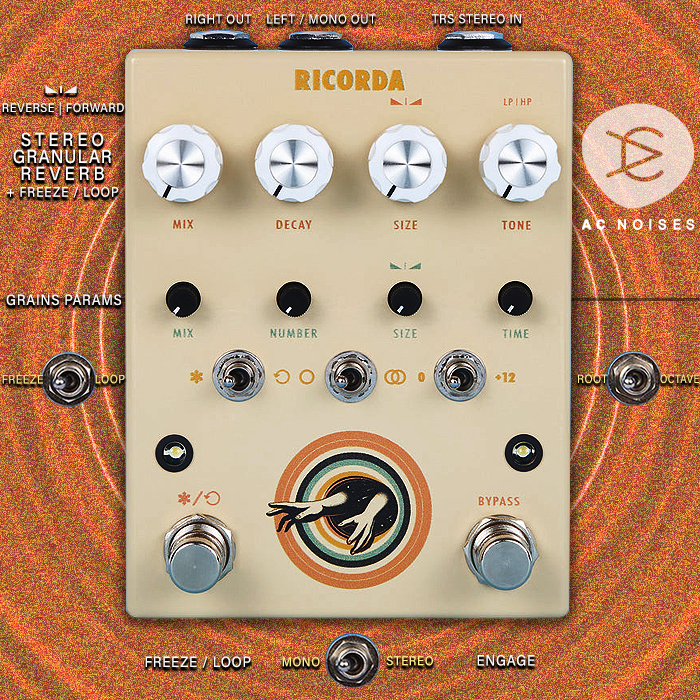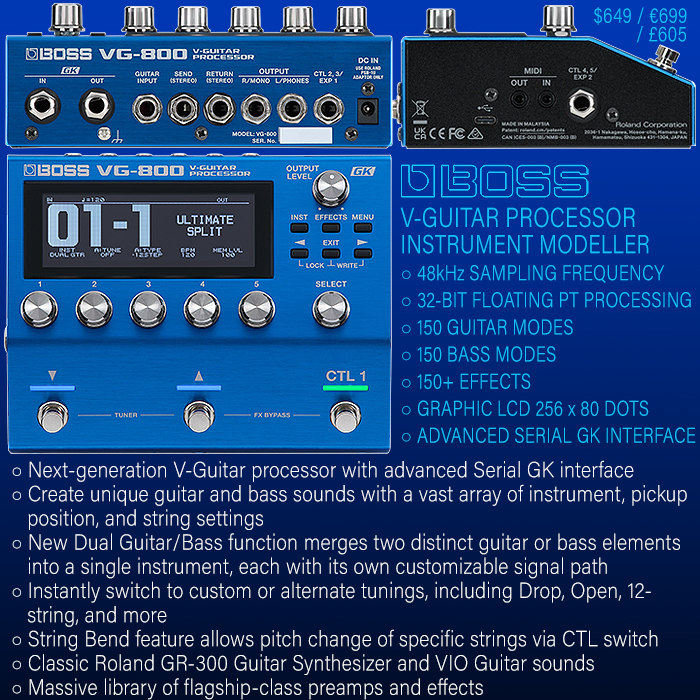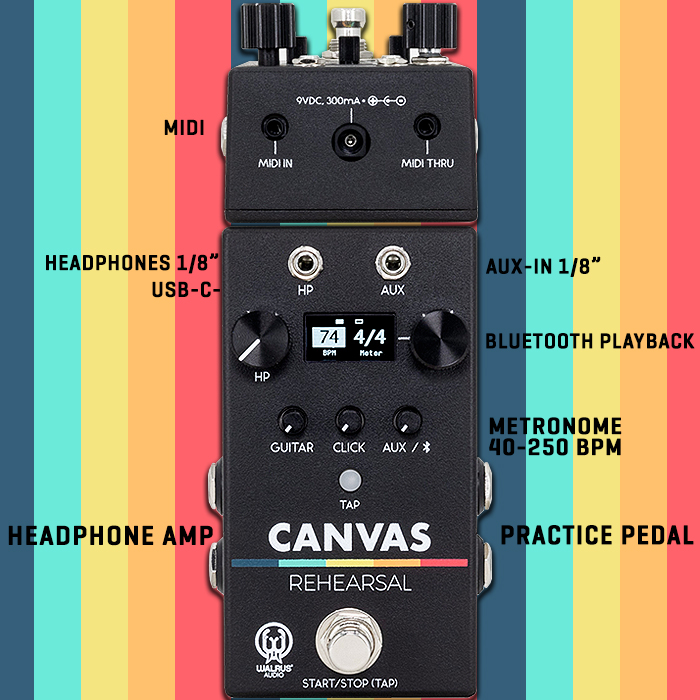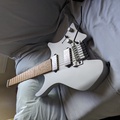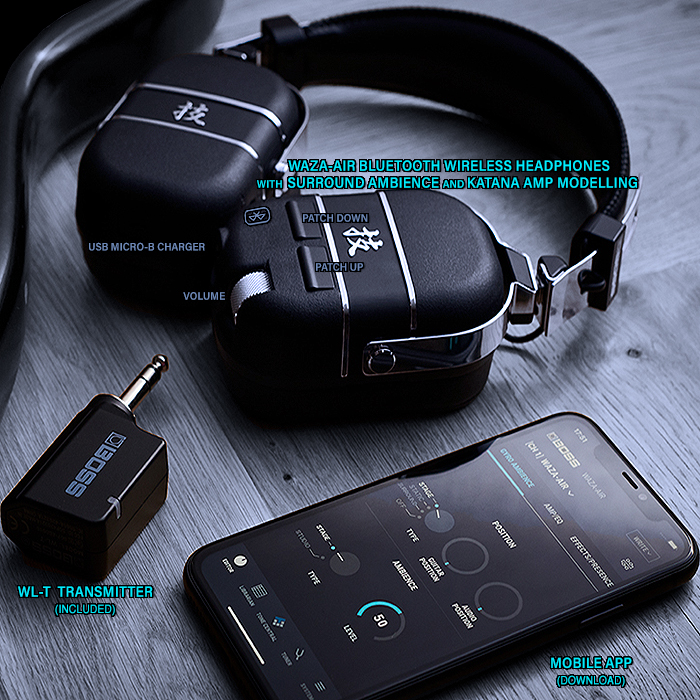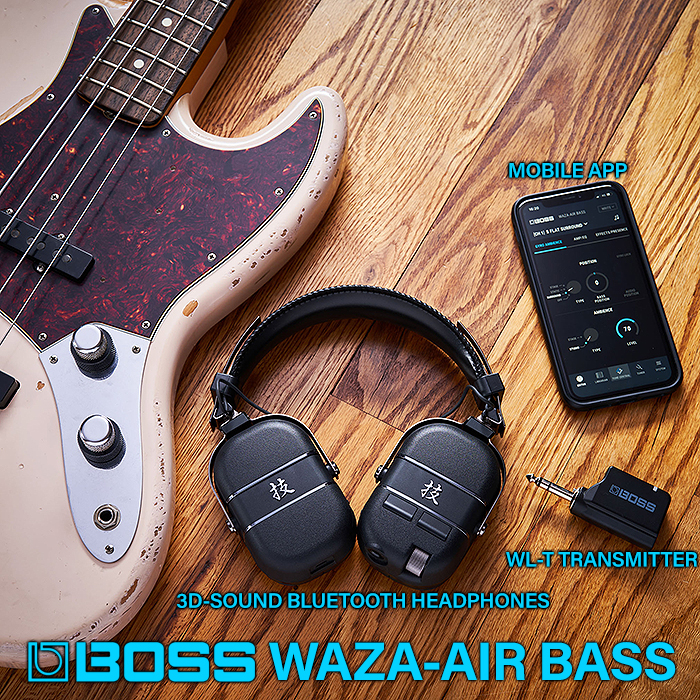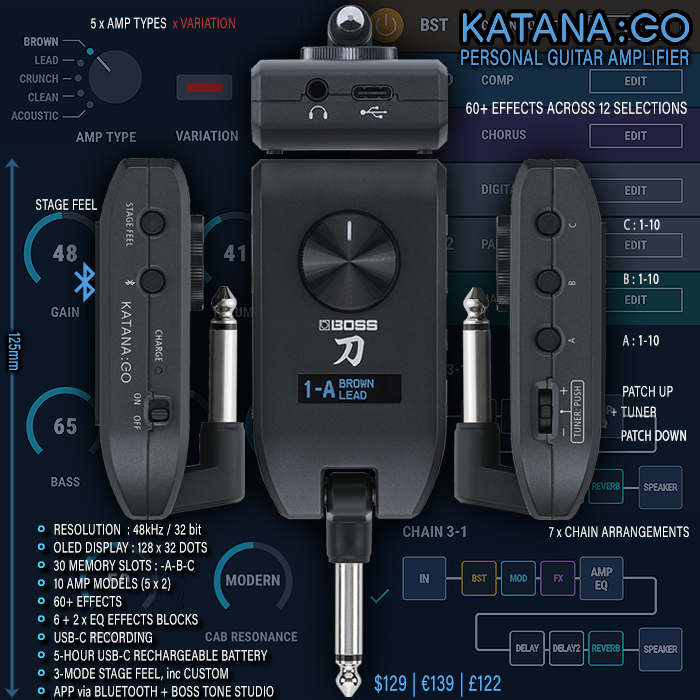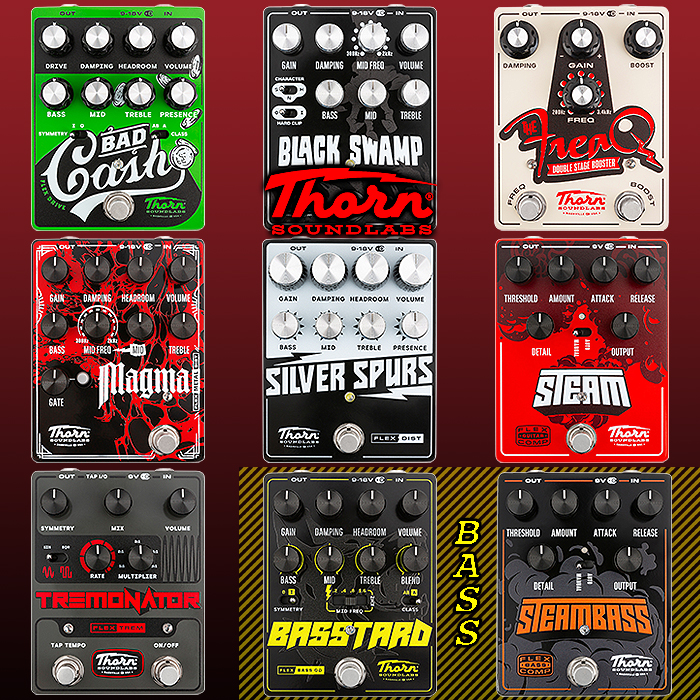9 Cool Headphone Amps
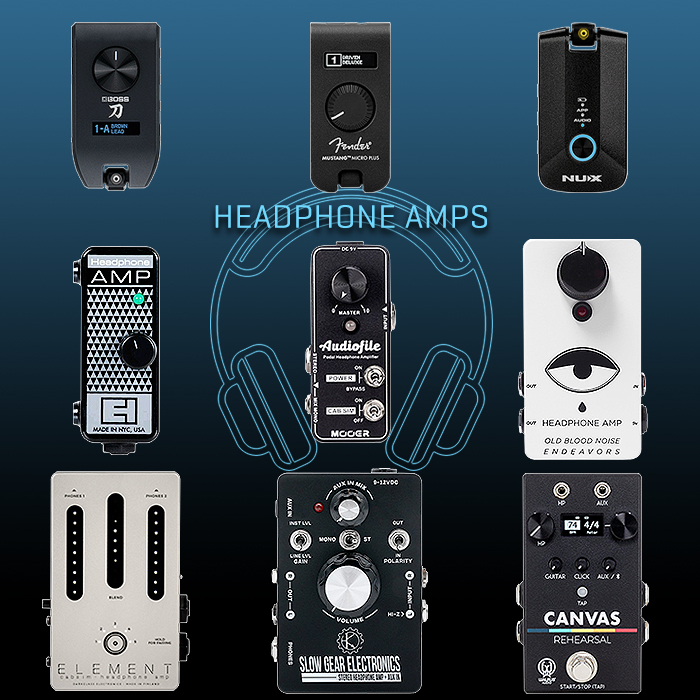
This article was prompted by the recent NAMM show, the new Walrus Audio Canvas Rehearsal in particular, and my thoughts about the big forthcoming UK Guitar and Pedal Shows. This post also hints at the return of a personal favourite!
I initially had the list and visual arranged in alphabetical order - but it made more sense to arrange those devices per the above visual - which has the sort of guitar jack micro multi-fx and headphone amps listed first, followed by the mini, and then compact enclosure editions.
We kind of have 3 or 4 different subsets here - which we will references as we go along. Obviously we start with those perfect green-room / dressing room Practice Headphone Amps and then move up the categories.
Boss kind of changed the game here with its Katana : Go, where Fender then bought up all those remaining chips in the world, while ’borrowing’ the best bits of the Katana : Go for its Mustang Micro Plus. That aggressive move essentially ended that version of the Katana : Go - where Boss had to seek out a suitable alterntaive replacement chip - and then re-engineer its circuit to those new specifications! The end result being that the Katana : Go was forced out of contention - and the Mustang Micro Plus capitalised on its perfect stocking filler potential just in time for Christmas - with its main competitor firmly ousted from the market - a big loss to Boss in more ways than one.
Will be interesting to see what Boss does in future retaliation for that Fender aggression! While many will say that Fender simply has better business sense - and Boss should really have secured more of those chips for itself as they had an early first-mover advantage. The big question here is whether this would have happened on Yoshi Ikegami’s watch - who is sadly retired from operational duties nowadays!
At the other end of the scale - in terms of size - we have 3 competing but very individualistic devices - with the highly evolved Walrus Canvas Rehearsal - up against the DarkGlass Element and Slow Gear Stereo Headphone Amp.
That leaves the EHX Headphone Amp, Mooer Audiofile, and OBNE Headphone Amp as the simpler more straight-laced variants - while the little Mooer does also have a simple Cab Sim!
Here are my featured 9 - where the cheapest here is a mere 1/5th of the price of the dearest - but then it has a much lesser feature set :
- Boss Katana : Go Personal Guitar Amplifier - $129
- Fender Mustang Micro Plus Guitar Headphone Amp - $129
- Nux MP-3 Mighty Plug Pro Headphone Amp - $119
- Electro-Harmonix Headphone Amp - $53
- Mooer Audiofile Pedal Headphone Amplifier - $49
- Old Blood Noise Endeavors Utility 1 Headphone Amp - $109
- Darkglass Element Cab Sim and Twin Headphone Amp - $239
- Slow Gear Electronics Stereo Headphone Amp + Aux In - $179
- Walrus Audio Canvas Rehearsal Practice Pedal and Headphone Amp - $249
I only own one of these to-date - the Boss Katana : Go - which I love, I’m tempted to check out the Fender one too - just to see how it compares with my favourite - it certainly has a prettier App Interface - which is borrowed from its larger Tone Master sibling - which in turn was inspired by the benchmark plugin interfaces by AmpliTube and Positive Grid. While there are several who prefer the cleaner simpler interface of the Boss - I’ve long felt that Boss could do with improvements in its interface design, while its hardware design is always top notch - but some of those digital displays and app screens leave some users wanting a more colourful interface - populated with actual facsimile icons of those classic pedals and amps - while Boss is rather more ’wireframe’ in nature - but still uses colour well - just in outline format!
Whenever I attend Guitar and Pedal shows - I’m always interested in what device has been chosen for the end of the chain - interestingly in yesterday’s article - that Thorn Soundlabs board - used a tiny Mooer Audiophile.
I felt there would be a trend in seeing more Boss Waza Air’s at the more headphone-style shows - but for whatever reason that only had a minimal impact immediately following its releases.
I’m pretty sure that the Walrus Canvas Rehearsal is going to do very well - I feel that the DarkGlass Element, and OBNE Headphone Amp may have been retired by now - but there are still several with dealers!
I personally don’t have practical applications for any of these - as I mostly live alone - and can practice loud and live most times of the day. I thought I would use the Katana : Go more - in particular with family guests staying with me for a week or two - but I always found time to access the main rig - so there was less impetus to use Headphones.
Admittedly I Used the Katana : Go for several months after I got it - but I guess its novelty faded away eventually, and it doesn’t get used too often now - even though I do still very much enjoy those sessions! And there’s a rumour going around that the new updated Boss Katana : Go might be out pretty soon again. Perhaps that will inspire another bout of ’Headphone Sessions’ while I’m principally and air-pusher and noise-maker - so live and loud will always be my preference.
There are further details on each device / pedal as below! :

Boss Katana : Go Personal Guitar Amplifier - $129
Controls - Volume, Stage Feel, Bluetooth Sync, Charge LED, On/Off Switch, Select ± - Push for Tuner, 10 A Presets, 10 B Presets, 10 C Presets.
Ports - 1/8" Headphones, USB-C.
60+ Effects across 12 Selections - with ultimate Bluetooth App Connectivity and smart 3D Stage Feel function. I loved this when it first emerged - and its replacement is supposedly due any day now. I said at the time that everyone who ever owned a Katana Amp needs one of these - it really sounds amazing through your own personal headphones - and has all the same core features and flavours of your Katana Amp - where you can even share presets across that platform! This was the original game-changer in this sector before Fender out-manoeuvred Boss and stole its thunder!
Fender Mustang Micro Plus Guitar Headphone Amp - $129
Controls - Volume, Save, On/Off Switch + Bluetooth, Preset±, EQ±, Modify±, Tap - Hold for Tuner.
Ports - 1/8" Headphones, USB-C.
So Fender somewhat aggressively bought up the whole chipset, borrowed the best bits from the Boss Katana : Go, and added some Tone Master sparkle on top. This has 25 Classic Amps and 25 Effects onboard - quite different in makeup to the Boss one which has a lot less Amp types per se, but a lot more individual effects. For me there is a degree of parity with the Boss one - and there will probably be equal numbers who have a preference for each variant. I'm obviously a Boss guy - with a super high understanding and appreciation for specific Boss effects and flavours - so I will always more likely lean into that, while I do concede hat the Fender App Interface is prettier - where it's copied the plugin leaders - like AmpliTube and Positive Grid - with cool facsimiles of the source devices. Each micro headphone amp will appeal slightly differently to each prospect - both are pretty great devices - it really depends what flavours you want, and what you'e more familiar and comfortable with. I will likely end up with one of these too - even if just for a point of reference!
Nux MP-3 Mighty Plug Pro Headphone Amp - $119
Controls - Reset, +/-, On / Mute.
Ports - 1/8" Headphones, USB-C.
This Nux variant has the most effects options of this trio - with 29 Amp varieties, and 45 Effects. Its hardware controls are the most minimal - it offloads most of that to its Bluetooth App - which sits somewhere between the Boss and Fender one - closer to the Boss in most ways - the Fender App is a little more detailed with those proper amp and pedal facsimiles - which I really like. Probably I should get this version too as it really is very decent - I do like to contrast and compare. While my first choice would most likely be the Boss - for all the reasons I've already mentioned, and then it's really neck-and-neck between the Fender and Nux although I really like the slighlty more sophisticated Fender interface. I've said before that there are so many factors that go into the decision-making process - it's not always the most potent, or necessarily the 'best sounding' one that wins out - it's the combination of all the different characteristics - and the overall ease and comfort in using the device, plus how much joy it delivers! It wasn't always the console games with the prettiest graphics or most complex gameplay that won out - often it was about far more esoteric - and touchy-feely concerns! In any case all three of these micro devices are excellent - and each has its own set of pros and cons - there are no wrong choices here - just which one overall appeals to you the most!
Electro-Harmonix Headphone Amp - $53
Controls - Volume.
Ports - 1/4" Input, 1/8" Output - Headphones.
This is by far and away the simplest one here - really not much to say - simply a sort of clean and transparent boosting headphone amp - no amp sim / cap sim or any extra flavours - interned to be wholly neutral!
Mooer Audiofile Pedal Headphone Amplifier - $49
Controls - Master Volume, Power : On/Bypass, Cab Sim : On / Off.
Ports - 1/4" TRS Stereo Input, 1/4" TRS Stereo Output, 1/8" TRS Stereo Mix Mono Output of Mono Signals.
You can see this one being used on the Thorn Soundlabs board at NAMM - it's the cheapest one here - and it does everything you need it to!
Old Blood Noise Endeavors Utility 1 Headphone Amp - $109
Controls - Volume.
Ports - 1/4" Input. 2 x 1/4" Outputs - Headphones : All Mono
This is another really simple one - kind of in the same grouping as the EHX and Mooer ones, but slightly larger enclosure. Single input and Dual Headphone Outputs - while unlike for the Darkglass Element - where you have separate level controls for each headphone output - here we just have the one central master volume!
Darkglass Element Cab Sim and Twin Headphone Amp - $239
Controls - Ground Lift, Phone 1 Level, Blend, Phones 2 Level, Cab Sim : 1-5 - Hold for Pairing, dB Cut : -30dB / 0dB / -12dB.
Ports - XLR Direct Output, 1/4" Instrument In / Speaker Out, 1/4" Instrument Out, Speaker In, 1/8" AUX In, USB-C, 1/8" Headphones 1, 1/8" Headphones 2.
Bass effects specialist Darkglass Electronics makes some great touch-control devices like this one. Handily you have 2 headphone outputs here, and a Cab Sim onboard - so you have more expanded routing and output possibilities. The second dearest here - but definitely worth your consideration - a very elegant looking device for sure!
Slow Gear Electronics Stereo Headphone Amp + Aux In - $179
Controls - AUX In Mix, Instrument Level / Line Level Gain, Mono/Stereo Switch, Polarity : Out/In, Volume.
Ports - 1/8" Aux In, 1/4" Right Out, 1/4" Left Out, 1/4" Phones Out, 1/4" Right Input, 1/4" Left Input - Hi-Z
Independent brand Slow Gear Electronics is best known for its buffers and DI devices - and this neat Stereo Headphone Amp - it's still relatively straight up - but there are some cool extra features onboard - it's that neat in-between enclosure size which is half-way between compact and 1590BB sizes. It's a smart and good looking device for sure.
Walrus Audio Canvas Rehearsal Practice Pedal and Headphone Amp - $249
Controls - HP Headphones, Rotary Menu Control, Guitar Level, Click Level, AUX / Bluetooth Level, Tap Tempo Button, Metronome Start / Stop / Tap Tempo Footswitch.
Ports - 1/8" Headphones Out, 1/8" AUX In, USB-C, 1/4" Mono (L) Out, 1/4" Stereo (R) Out, 1/8" MIDI In, 1/8" MIDI Thru, 1/4" Mono (L) Input, 1/4" Stereo (R) Input.
And finally - the one we're likely to see the most of at the various headphone shows this year - a combination of metronome, Bluetooth and AUX inputs. I still think it's main use will be as a Headphone Amp - with extras. The top 3 micro units are much better green room practice devices - so even though there are probably 4 categories of devices - they largely fall into just two genres - Practice Devices and Pedalboard Headphone Amps.

